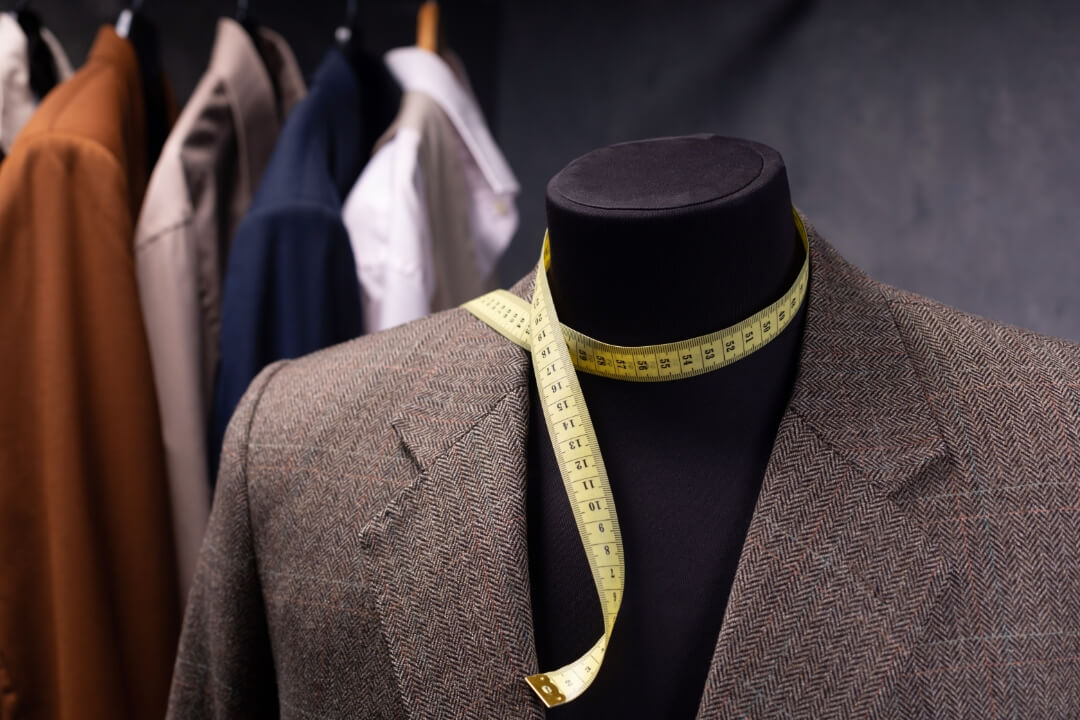
Learn How to Draw a Suit Jacket in an easy and hassle-free way within a few simple steps
Learning how to draw a jacket may seem hard when you start, but like anything in life, practice, and patience are the keys to becoming proficient. Drawing a basic subject, like a jacket, can provide beginners valuable knowledge to study and understand the basics that extend far beyond just sketches of jackets. So, in this beginner-friendly guide, we aim to provide detailed steps to help you draw your first jacket and grasp foundational drawing techniques that can set you on the path of your artistic journey.

Drawing is not just about replicating the visible; it's about understanding what's beneath the image and simplifying complex forms into basic shapes. Figure drawing invariably begins with simple geometric shapes, and therefore, knowing how to sketch these simple shapes correctly is crucial. Taking our example of a jacket, it may initially seem like an array of different complicated forms combined, but when broken down, it embraces straightforward shapes like rectangles, cylinders, and so on. Learning these fundamentals becomes vital, especially for beginners who are testing the waters of sketching.
Beginners and professional artists alike know that creating art is a gradual process - it relies not on jumping straight to the final draft, but rather progressively building it from a baseline sketch to highlighting the tiniest texture details. When sketching a jacket, the same technique is applied.
Sketching Initial Baseline Shapes Mapping out the first shapes of the outer jacket should be light and need not worry about detail. At this stage, accuracy is less important; you're just giving a loose outline of the dimensions where your jacket would fit on your canvas. Sketched lightly, these lines can be modified along the progression.
Incorporating the Details. After outlining the primary baseline shapes, it's now time to incorporate rough detailings to indicate your jacket's type and material. Light ring lines for the puffer, a couple of slanted lines for zippers, and thus continue the detailing based on different jackets like trench, denim, fleece, whatever your muse might be.
Adding Sleeves and Collar. Next, work on enhancing and rounding the sleeves and collar, maintaining correct proportions. Use curved lines at flexible sections that can show the fabric's natural folding like the elbow bend or hunch of the jacket collar.
Detailing Realistic Features. After completing the basic outline, refine your sketch to develop the lifelike aspect of the jacket. Focus on adding creases, hemlines, zippers or button details, and textured patterns. These subtle enhancements provide authenticity and visual depth.
Final Touches and Shading for Depth. In this last step, blend in appropriate shading, introduce some highlights where the light hits the object, and shadows where it recedes. Shading can give your drawing a 3-dimensional look if done correctly. Use different shades of a pencil or apply different pressure to achieve this effect.
Incorrect measurements can lead to a distorted final object. It's easy to get off-track and make errors in proportional representation, especially when i.e., make sure jacket sleeves are no larger than the body portion. Hence, it’s suggested to pay close attention to elements' relative sizes and maintain close-to-real ratios.
Shading breathes life into your flat illustration by providing an illusion of depth. New learners usually make the mistake of improper dispersion of shades. Take your time to closely study cases of shadow and light to establish where the deepest tints and highest light fall.
Specific textures or unique trim of jacket details often get overlooked due to difficulty levels. However, every singularity in your sketch adds a whole different sophistication to your work. Carefully study your model for any peculiar stylistic details and choose your technique to recreate observed textures.
For advanced artists, jacket drawing provides ample scope for showcasing skills, attention to detail, and level of technique. If you are ready to take up challenges or level up your skill, you can indulge in various techniques:
Nothing screams diversity more than a mad mix of materials. Different types of materials such as leather, denim, or canvas reflect light differently, affecting varied textures. A leather jacket, for instance, is quite glossy and therefore, reflects a lot of light. Try to illustrate this feature in your drawing by creating a contrast to stand out these shiny areas from the dull ones and capture the vital characteristics of the material. The denim expression, however, can be derived through parallel stitch lines and broken detailing, providing a true rough-and-tumble feel on canvas.

Jackets don't hang in the air, they're worn by individuals. Fasten up your belts here's a chance to elevate your composition with notes of perspective. You can begin your illustration by sketching out a bare body shape first, thereafter placing the jacket on the figure. This approach insists your energy towards exhibiting creases and scale adequately in drawing which may help by leaps and bounds in editing a motivated flow next.
In conclusion, remember, every great artist starts from the core - attuning their skills through practice. Have faith in your potential, understand above mentioned instructions on how to draw a jacket, pick up that pencil, and with a few thoughtful strokes, let's immortalize that jacket on paper! With every jacket you draw, you are layering yourself not just with knowledge in sketching, but patience, observational skills, and the capability to translate this 3D world onto a flat paper. Drawing breathes a new perspective into the most mundane subjects. So let your imagination and spare sketch sheets run loose and continue to bring that inner Da Vinci in you to the forefront.
Q: How long does it take to sketch a jacket properly?
A: Having a few quick strokes based on experience, an artist might complete a basic jacket sketch in under an hour. New beginners, though, may take longer and that's completely normal. Always remember that the goal initially is not speed but accuracy and a sense of learning.
Q: Is sketching a Jacket difficult for beginners?
A: Abstract images can intimidate beginners, but starting with simpler items like a jacket may prove less daunting. Jackets consist of basic shapes which are fundamental to the art of drawing, making it an ideal starting point for beginners.
Q: What is the easiest way to create a realistic texture?
A: Texturing can greatly improve how lively jacket pieces appears and this method is neatly achieved. Usually, parallel lines are used for denim, a pile of lines signifies jersey material, lots of tiny dots could communicate suede essence, and so. Although, using reference images and practicing varied textures regularly go a long way to intuitively depict them in your artwork.
Q: Can fundamentals apply while drawing jackets of different styles and materials?
A: Fundamentally, all drawing starts from interpreting basic shapes and transferring them onto your sketch. Material type may change the detailing and texture which are handled in outlining and shading phase. All tips from sketching basic torso shape - defining sleeve dimensions - accounting for folds remain the same and style varies in the detailing part.